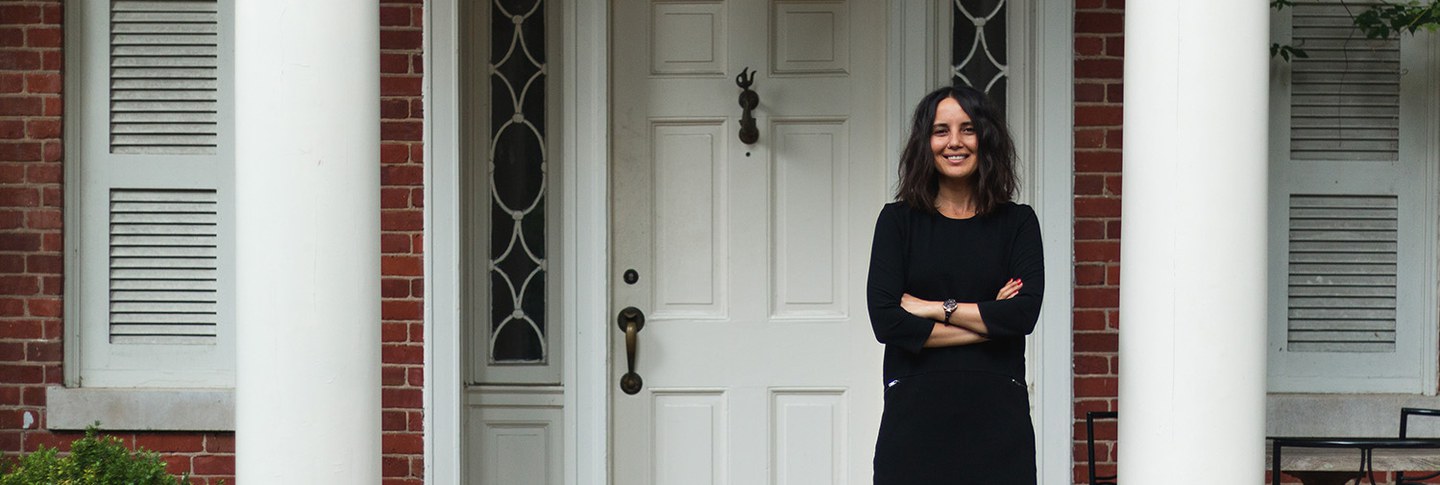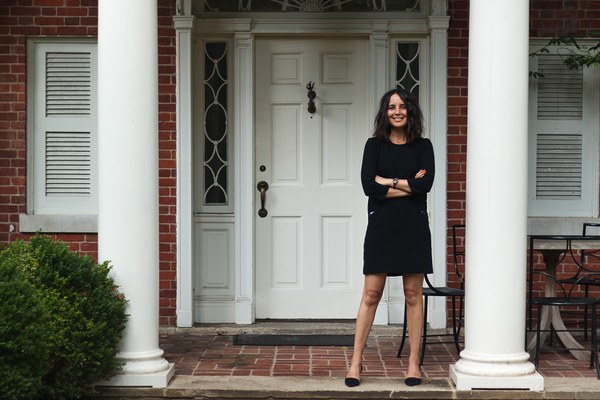Reyhan Durmaz, an assistant professor of religious studies at the University of Pennsylvania, was a 2018–2019 junior fellow in Byzantine Studies. Her research report, “Saints, Stories, and Sanctity between Christianity and Islam,” analyzed the presence and functions of Christian saints in early Islamic literature.
Q&A with Reyhan Durmaz
How did stories move from Christian and Jewish communities into the early Islamic world?
Islam originated in the 7th century in the western part of the Arabian peninsula, a region connected to Syria, Palestine, Iraq, Egypt, southern Arabia, and Ethiopia. So the early Islamic world had strong social, political, and religious connections to these regions where significant Christian communities were present.
In the storytelling world of antiquity, stories traveled across religious boundaries, which were often porous and fluid. In particular, a lot of people orally narrated saints’ stories. Through storytelling, people would learn about the world, be entertained, be exhorted and instructed. Storytelling was probably one of the strongest media that facilitated cultural transmission during this time.
Who was orally narrating saints’ stories in antiquity, and how? We think of bishops, for example, or monks, narrating hagiographical stories in liturgical or monastic contexts to their pious audiences. The practice was, however, much broader than that. Laypeople also told stories about saints, young and old, men and women. And this kind of storytelling was not restricted to monasteries and churches. In the markets, on the road to pilgrimage shrines, in family gatherings, and in other contexts people told stories. We have textual descriptions of these instances.
The early Islamic community participated actively in this world of storytelling. There were so-called transmitters of knowledge, who are very much venerated in the Islamic tradition. The material they transmitted, as preserved in later literature, suggests that many people in the early Islamic community had access to Christian and Jewish material. This knowledge was preserved and transmitted, in oral or written forms, in various contexts: for example, the family. Many of the early Muslim families had been Christians or Jews a generation or two earlier, so they still had an active memory of those cultures, and they transmitted those memories within the family.
What is one of your favorite stories that moves across religious boundaries?
Saint Anthony! He lived in the 4th century in Egypt. He is the archmonk in the Christian tradition, a very prominent figure, believed to have founded monasticism. His life was written in Greek in the 4th century and translated into many languages in the eastern Mediterranean and beyond.
In 9th-century Baghdad, we have a Muslim author writing a story in Arabic where Anthony is very recognizably this Anthony of Egypt from the Christian tradition. The author says there was a king called Athanasius on his deathbed, and a group of people went to Anthony to consult him about how to choose a new king. Anthony tells nine funny stories to these visitors with the punchline that you should not do stupid things, especially if there are clear warnings about the undesired outcomes of your actions.
For example, one of the stories Anthony narrates is about a man who poses as an abbot to a monastic community, and they believe him because he has a big beard. Everyone starts venerating this big-bearded man, but he was an impious man. Finally, after corrupting the community for a number of years, he is expelled and put to death for having sex with a woman.
I find it very interesting that a 9th-century Muslim author, through the mouth of a very well-known Christian saint, exhorts the audience on divine punishment and divine reward through humorous stories. Our author probably used his own creativity to make a new Anthony out of an old, renowned Anthony.
Why look at stories about saints like Anthony, and not just the Bible or Qur’an, when discussing the early Islamic world?
How to define the early Islamic community? The answer generally involves Muhammad and the Qur’an, and that’s fair. But the early Islamic community—or any early religious community—is never about one person’s agency and the scripture. Nobody had a book of the Qur’an in the early Islamic community. Muhammad, a very charismatic leader, preached to his community, sometimes as a Qur’anic preaching, and sometimes in other forms of public address. His Qur’anic preaching and other sayings and deeds were collected by the Muslims around him, leading to the scripturalization of the Qur’an after Muhammad’s demise. So it is essential to ask who else was preaching in this community. What religious and especially biblical knowledge was in circulation? How was Muhammad’s preaching perceived, contested, and contextualized?
Beyond the Bible and the Qur’an, there were very rich literary and oral cultures in these late antique communities. That’s why I look at saints’ lives, homilies, epic poetry, historiography, and other sorts of literature. Studying these non-biblical traditions helps us understand the broader connections and not only focus on the biblical myth-making process of one particular community.
Julia Ostmann is Postgraduate Writing and Reporting Fellow at Dumbarton Oaks. Photo by Elizabeth Muñoz Huber, Postgraduate Digital Media Fellow.

